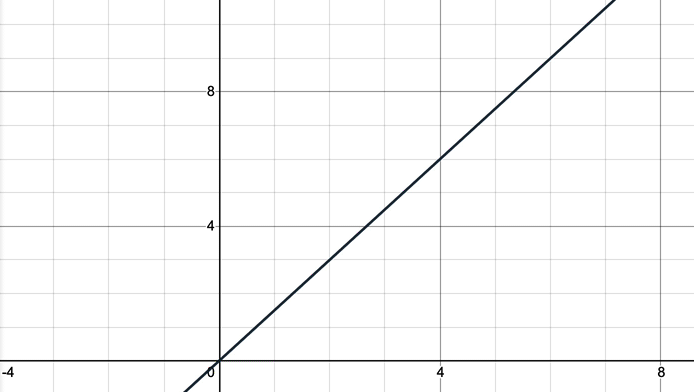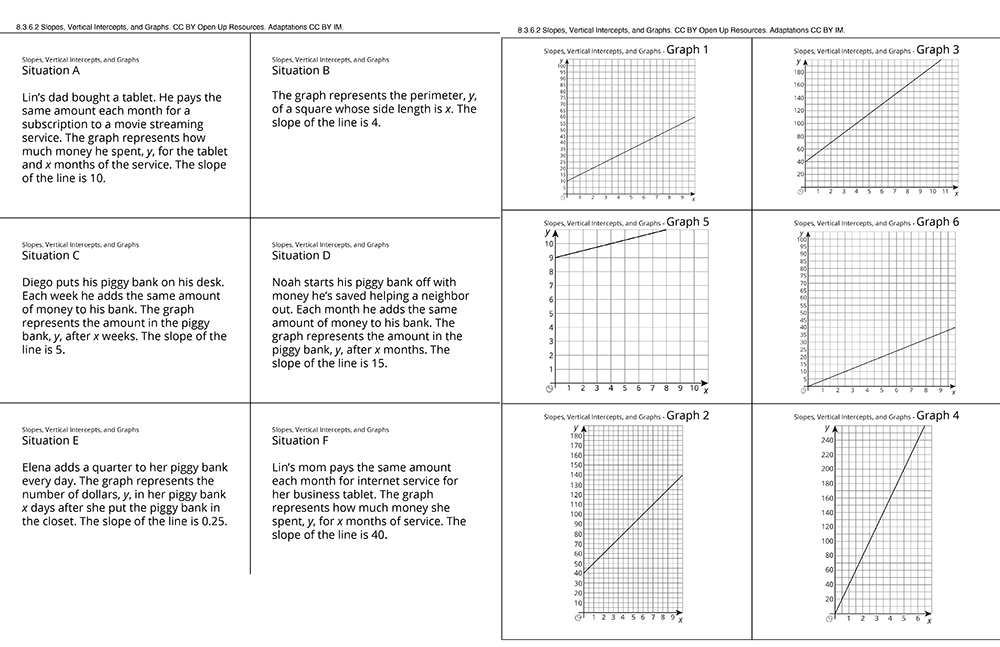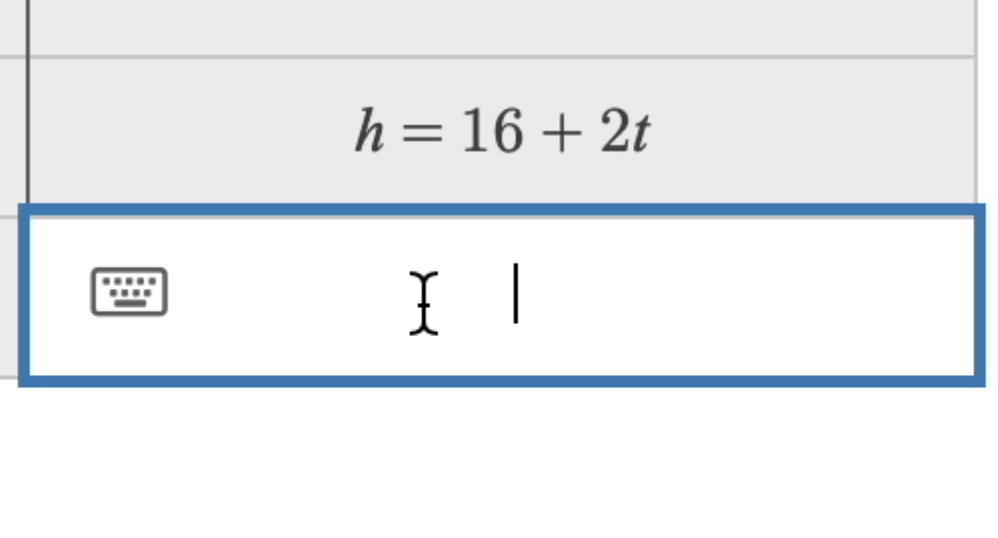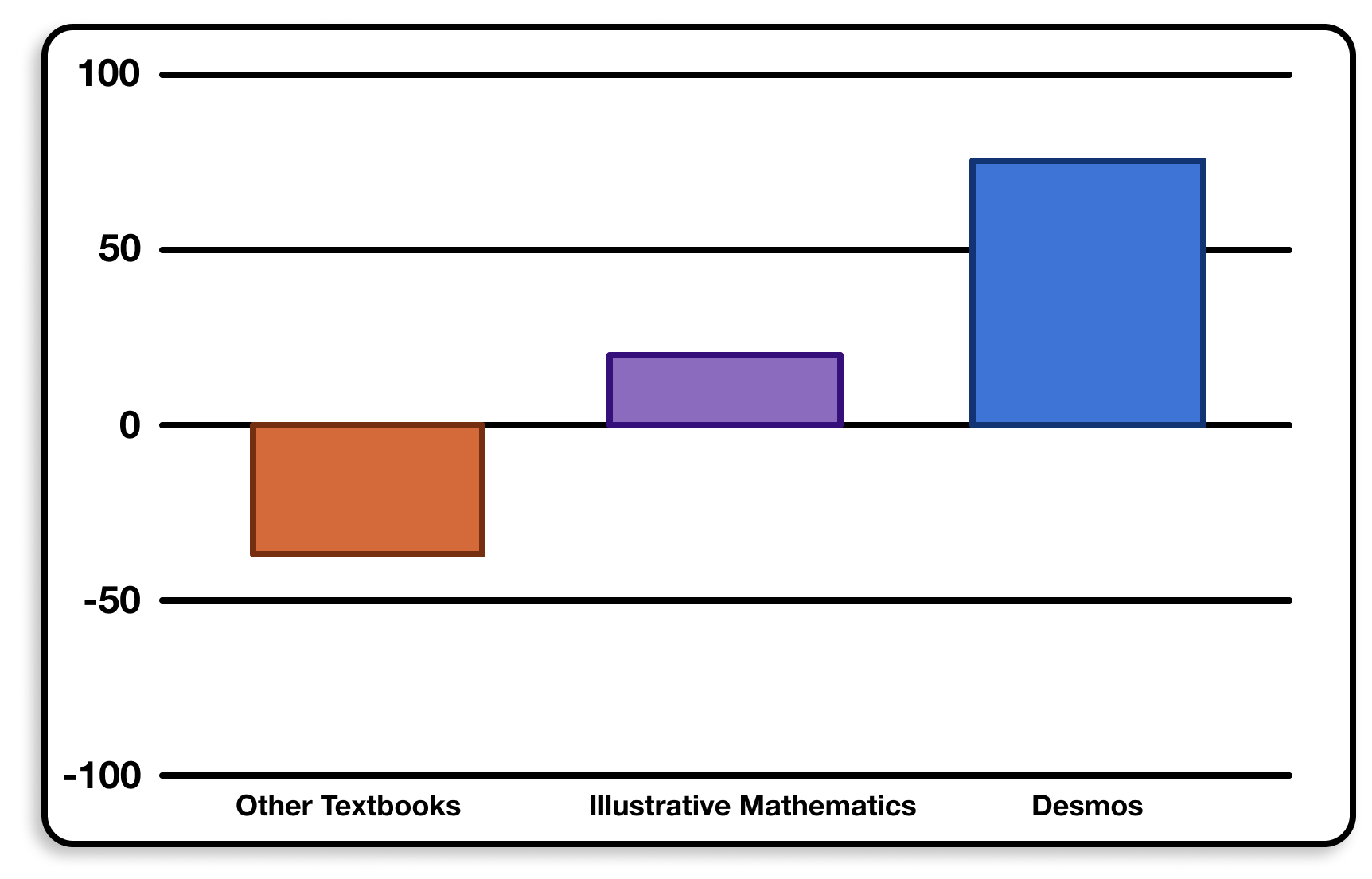Welcome to a series of posts sharing how we #Desmosify the curriculum from Open Up Resources/Illustrative Mathematics. You can use this lesson for free, or sign up to get many more activities just like it in our core middle school curriculum!
Here’s how we #Desmosified an Open Up Resources/IM lesson about vertical intercepts.

Desmosification #1: Connect math to the world and back again.
A conviction we share with Open Up Resources/Illustrative Mathematics is that math learning is more durable and more interesting when students get opportunities to connect mathematical representations.
In their original lesson, OUR/IM invites students to connect together text and graphs.

So we were excited to use our digital technology to invite students to connect graphs and a dynamic animation.

We used our technology to let students make that connection in both directions. They turn our flag into a graph. But we also turn their graph into a flag.

Desmosification #2: Go further with fewer contexts.
The original OUR/IM lesson invites students to think about one context in its warm-up, six contexts in its card sort, and another context in a later activity. We originally had more contexts too, but teachers told us the lesson felt scattered and that students were doing too much reading and reorienting to focus in depth on the mathematical goals.
We decided to introduce more contexts in the rest of this unit on linear relationships, but we kept this lesson focused only on the flag. We explore this context in different ways throughout the lesson so students stay engaged. The result is that students know the context so well they can explore it using not just graphs, but numbers, tables, and equations as well.

Behind the Scenes
A word from Desmos lesson developer Michael Fenton on the development of the lesson:
Our original version of this lesson included three contexts. We kicked things off with a visual pattern (asking students, “How many tiles in the nth stage?”), spent five screens reasoning about flag scenarios, and then wrapped things up with several screens comparing social media followers vs. time. The consensus from our early classroom testing is that the lesson contained some promising ideas, but was generally scattered and unfocused. So in our revision of Grade 8 Unit 3, we pared everything back. We deleted the warm-up, dove directly into the flag scenarios, and lingered there for quite a bit longer. Our hope was that the tasks and prompts we built around the flags would be strong enough to carry the entire lesson, and that by focusing on a single core interaction, students would better grasp the main mathematical ideas in the lesson.
What Did Teachers Think?
The kids really connected the starting point and the speed to the equations in this lesson. Many “ah-ha” moments were had with very little prompting by myself. I don’t think that I have had kids connect to linear relationships so quickly through the equations.
Students that don’t typically feel successful in math class were shining today. They were making the connections as quickly as everyone else.
This lesson was one of the best I have seen at getting kids to grasp the idea of y = mx + b without ever providing the formula to them. It was a great day when I could watch them correctly come up with the equation on their own and have them truly having ahha moments.
Shoutouts
- Shout out to Open Up Resources/Illustrative Mathematics for developing a fantastic print curriculum that inspired so much of our own work.
- We’ve been working with connected representations since the second lesson we ever created, Function Carnival. Shout out to that little goofball, which celebrates its seventh birthday in January! 🎉
- Decades ago, SimCalc developed a tool that connects representations in a similar way. They’re one of many giants whose shoulders we stand on.

Overall, teachers in our 2019-20 pilot study really liked the Open Up Resources/Illustrative Mathematics curriculum … but they loved what we did to #Desmosify it. (Definition of the scale.)
What’s Next?
- Invite your students to play with Flags!
- Get activities like this every day in our core middle school math curriculum.
